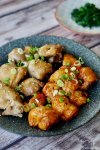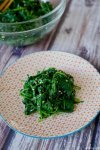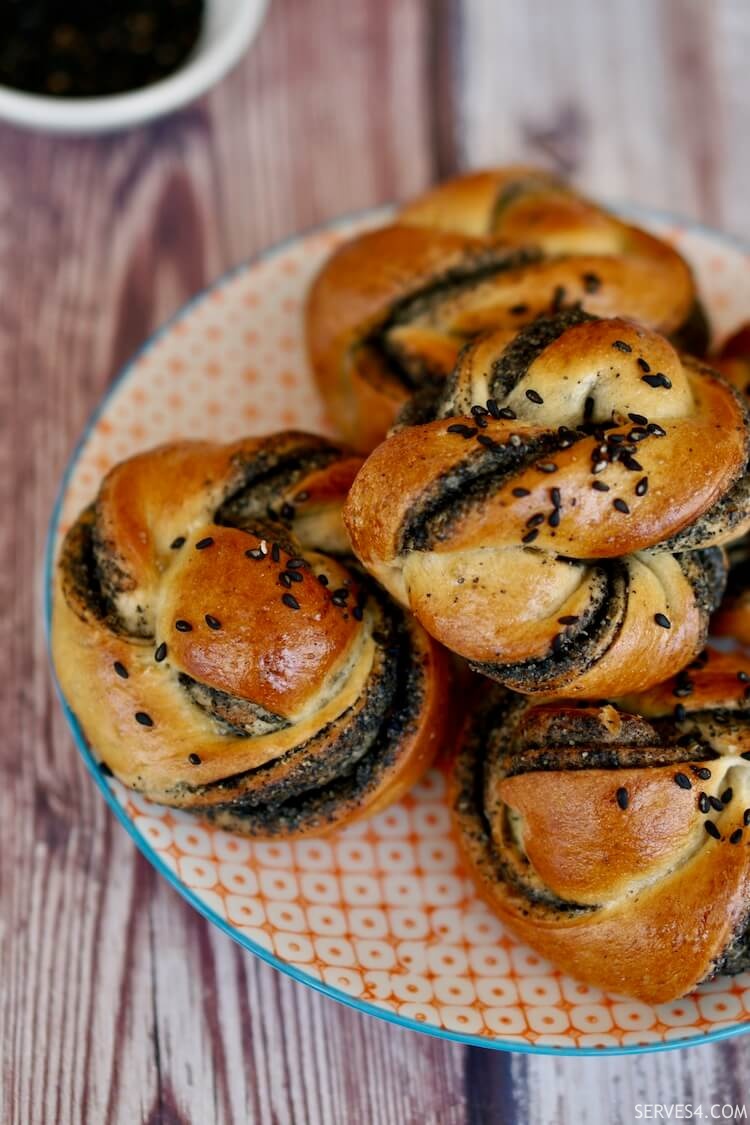- Serves 4
- 7-9 Months
Stage 2 Baby Food
This page may contain affiliate links, which means we receive a small commission for purchases made using the links. There is no additional cost to you. Please read our full disclosure policy.
When is baby ready to move onto Stage 2 weaning?
Your baby may be ready to move onto Stage 2 baby food if he is approximately 7 months old and has been happily eating a wide variety of purees. He should be comfortable being fed by spoon and should be digesting roughly 8 tablespoonfuls (120ml) of food per meal.
During Stage 2, as the amount of solids baby eats increases, the amount of milk he drinks will gradually decrease. However, he still needs between 18-21 ounces (500-600ml) of milk per day, split between all his milk feeds and the milk used to cook his food.
Stage 2 baby food continues the introduction of a wide variety of foods – the aim is to develop baby's taste buds and to ensure he is receiving adequate nutrition. Exposing your baby to a broad range of tastes from an early age will help keep him from becoming a picky eater as a toddler.
What is Stage 2 baby food?
At 7-9 months, most babies are ready to move beyond purees to explore different textures of food. Stage 2 baby food is slightly thicker in consistency and contains small lumps – it is either strained, mashed well with the back of a fork or pulsed in a blender, and should also include a wide variety of soft finger foods. Fruit no longer needs to be cooked but should be suitably ripe and soft – it can also be grated or mashed.
Finger foods will help develop your baby’s hand-mouth coordination, and self-feeding from an early age will also encourage good eating habits later on. Pieces of soft raw fruit, chunks of lightly cooked vegetables, and small pieces of bread are good finger foods to start with. Snacks of rice cakes, oatcakes or baby rusks are also a good way to encourage your baby’s finger coordination.
Make sure you read the labels of any commercially prepared baby snacks, as many are laden with added sugar. Choose those with no added sugar or those sweetened with fruit juice.
Many babies of this age also begin to show an interest in using a spoon to self-feed. If your baby is one of these, encourage him by loading some food onto a spoon for him to hold and gradually guiding it into his mouth. Specially made baby spoons are best to use, as their short wide handles will make it easier for baby to manoeuvre it into his mouth.
Don’t worry if most of the food ends up on the floor or down his front – all of this is good practice for baby’s hand-mouth coordination. Although I have found those bibs with food catching lips at the bottom to be particularly useful for recycling dropped food in moments like this!
Once your baby begins self-feeding, never leave him alone while he is eating, in case he chokes on his food. Now is also the best time to start encouraging good hygiene later in life by washing baby’s hands before each meal.
What kinds of new food should be offered to baby?
Babies moving onto Stage 2 baby food are generally ready to accept stronger tasting flavours, such as fish, spinach and cheese (grated). Any dairy included in baby’s diet (cheese, yoghurt, pudding, etc) should be full fat and pasteurised, as he still needs the extra calories and nutrition to grow, and the bacteria in unpasteurised food can be harmful to him. It is fine at this stage to use whole (full fat) cow’s milk to cook baby’s food, but don’t offer it to him as a drink until he is at least 1 year old.
Stage 2 baby food can include other adventurous flavours, such as pasta and wheat (if there is no history of allergies). Small pasta shapes mixed with a bit of vegetable puree are a great way to introduce baby to this all-time kids’ favourite dish.
Unsalted butter and olive oil can be used in cooking, although you should continue to avoid adding salt or sugar to baby’s food. If you would like to sweeten his food, try adding some mashed ripe fruit. Do not give your baby any honey before the age of 1, as it contains bacteria that could make him ill.
Eggs and canned fish, such as tuna or sardines, can also be included in Stage 2 baby food. Make sure the eggs are fully cooked-through, either hard-boiled or well scrambled. Try to stick to canned fish packed in olive oil, vegetable oil or spring water, as fish packed in brine contains added salt, which could be harmful to baby’s underdeveloped digestive system.
And if you want to encourage future vegetable eating, what better time than now to introduce leafy greens, such as spinach, Brussels sprouts and cabbage, into your baby’s diet? The tastes of these greens can be quite strong, so introduce them gradually by cooking them with root vegetables or a cheesy sauce to soften the flavour.
Salad items – including small pieces of chopped raw vegetables, such as tomatoes and cucumbers – can also be included in Stage 2 baby food and given to your little one to gnaw on, especially if he already has a few teeth. In addition to drinking water, baby can also be offered some fruit juice, but make sure it is well diluted if you don’t want him to develop a sweet tooth!
As with Stage 1 weaning, introduce new foods to your baby every 3 to 4 days, so you can closely monitor and isolate the cause of any potential adverse reactions. If you have a family history of allergies, consult baby’s doctor before giving him any ‘risky’ food.
How to move baby onto 3 meals a day?
If you have followed the tips from Stage 1 weaning in terms when during the day to feed your baby solids, he should already be eating most of his meals at roughly the right times.
Continue to offer your baby cereal, yoghurt and fruit after his morning milk feed. This meal now becomes breakfast, and as the amount baby eats gradually increases, you can begin to push his mid-morning solid feeding later, targeting lunchtime of 11:45am or 12noon.
If you find your baby is not hungry and not eating very much at lunch, try reducing the amount of milk he is drinking mid-morning to encourage him to eat better at lunchtime. On the flip side, if you find your baby gets hungry too early and cannot hold out until lunchtime, offer him a small snack of fruit during the morning.
In the evenings, you can now bring baby’s last solid feeding to earlier in the day, to become dinner, and give him his bedtime milk feed just before you put him down for the night. Babies often become very tired at the end of their day, so dinner should be a quick and easy meal.
During Stage 2, you should work towards firmly establishing 3 solid meals a day, and by the time your baby reaches 9 months, he should be getting most of his nutrition from solid foods.
What's on your mind?
Let us know any thoughts, comments or questions by getting in touch here.







